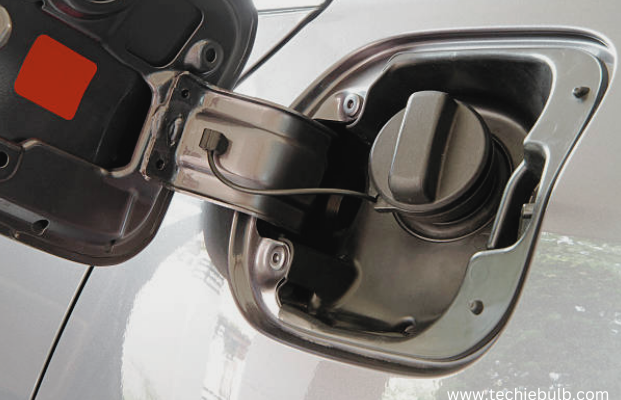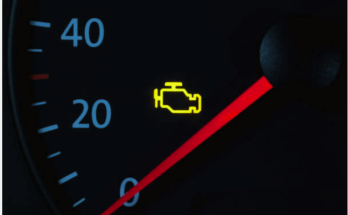When your vehicle’s gas cap check engine light turns on, it typically indicates that there is an issue with the sealing of the gas cap. This warning light can illuminate if the gas cap is loose, missing, or damaged, causing fuel vapors to escape from the tank. In some cases, a faulty gas cap can lead to decreased fuel efficiency and increased emissions.
To fix the gas cap check engine light, start by checking the gas cap for any visible signs of wear or damage and ensuring that it is securely tightened. If the light continues to appear even after addressing the gas cap, it might be advisable to seek assistance from a professional mechanic to thoroughly inspect for any other potential underlying issues that could be causing the warning light to stay illuminated.
KEY POINTS
- Common reasons for a gas cap Check Engine Light (CEL) to illuminate include a loose, damaged, or missing gas cap, which can lead to fuel vapor leakage and trigger the emissions system.
- A loose or damaged gas cap can create an incomplete seal, allowing fuel vapors to escape from the fuel tank. This triggers the vehicle’s onboard diagnostics system to detect a leak in the emissions system, resulting in the CEL illumination.
- To troubleshoot a gas cap CEL, start by checking the gas cap to ensure it is securely tightened. Inspect the rubber seal for any damage or wear, clean it, and replace if necessary.
- Debris around the gas cap and filler neck can interfere with the gas cap’s ability to form a proper seal. Dirt, grime, or obstructions can prevent the gas cap from securely closing, potentially causing a CEL.
- There are DIY methods to reset the Check Engine Light after addressing a gas cap issue. This can be done by using an OBD2 scanner to clear the error code or by disconnecting the vehicle’s battery for a few minutes to reset the system.
- Gas Cap CEL may not directly affect the vehicle’s performance or fuel efficiency, it indicates a potential problem with the emissions system.
What is the role of a Gas Cap in an Evaporative Emission System?
The gas cap plays a crucial role in the Evaporative Emission (EVAP) system by sealing the fuel tank and preventing fuel vapors from escaping into the atmosphere. This system is designed to control emissions by capturing and storing fuel vapors from the fuel tank that would otherwise contribute to air pollution. The gas cap forms a tight seal over the filler neck of the fuel tank and creates a barrier that prevents fuel vapors from escaping.
When the vehicle is in use, the EVAP system draws the stored vapors into the engine, where they are burned off during the combustion process. By maintaining a tight seal, the gas cap ensures the effectiveness of the EVAP system in reducing harmful emissions. A properly functioning gas cap helps maintain optimal fuel economy and engine performance by preventing fuel evaporation and loss. All in all, the gas cap plays an important role in controlling vehicles and protecting the environment.
Also See:- P0455 Code-Evaporative Emission System Large Leak Detected
How to Fix Gas Cap Check Engine Light?
Checking, Tightening or replacing the gas cap is usually a quick and easy fix that can be done at home and usually doesn’t require taking the car to a mechanic. If your check engine light is on and you suspect the fuel cap is loose, here are some tips to fix it.
1. Tighten the Gas Cap
Tightening the Gas Cap is important to prevent the check engine light (CEL) from coming on. If the fuel cap is loose or not properly closed, fuel vapors can escape from the fuel system. This triggers the vehicle’s on-board diagnostic system, which detects a possible leak in the emissions control system, causing the CEL to illuminate. By tightly closing the fuel cap after refueling, drivers can maintain a proper seal and prevent fuel vapor leakage, thus preventing false CEL activations. This simple but important maintenance step helps ensure that the vehicle’s emission control system is working efficiently and effectively, reducing the risk of unnecessary repairs and ensuring optimal engine performance.
2. Clean the Gas Cap
Cleaning the gas cap is a preventative measure to prevent the Check Engine Light (CEL) from coming on. Over time, dirt, debris and debris can build up on the gas cap gasket, reducing its ability to form a seal with the fuel filler neck. This can lead to a fuel vapor leak and trigger the vehicle’s on-board diagnostic system to detect the leak, causing the CEL to illuminate. By regularly cleaning the gas cap and ensuring the seal is free of contaminants, drivers can maintain a proper seal and avoid false activation of the CEL. Additionally, cleaning the gas head can extend its life and ensure optimal performance. This simple maintenance task can ultimately save drivers time and money by avoiding unnecessary trips to the mechanic due to CEL problems.
3.Examine the gas cap’s rubber seal
Examining the gas cap rubber seal is a proactive way to prevent the Check Engine Light (CEL) from coming on. The rubber gasket plays an important role in creating a tight seal between the gas cap and the fuel filler. Over time, this seal can deteriorate or become damaged, reducing its effectiveness. If the gasket is worn, cracked or missing, it can allow fuel vapors to escape from the fuel system, causing the vehicle’s on-board diagnostic system to detect the leak and turn on the CEL. By regularly inspecting the rubber seal for signs of wear, damage or deterioration, drivers can identify potential problems early and take corrective action, such as replacing the gas cap or repairing the seal. This preventative maintenance method helps ensure that the throttle cap forms a proper seal, preventing false activations of the CEL and maintaining the integrity of the vehicle’s emission control system.
4. Replace the Gas Cap
Over time, the gas cap can deteriorate or become damaged, reducing its ability to form a seal with the fuel filler neck. This can lead to a fuel vapor leak and trigger the vehicle’s on-board diagnostic system to detect the leak, causing the CEL to illuminate. By replacing the fuel cap with a new one, drivers can ensure that the seal is intact and functioning properly, preventing false activation of the CEL. Additionally, using a quality replacement gas cap can help maintain optimal sealing performance and prevent future problems. This simple maintenance step can ultimately save drivers time and money by avoiding unnecessary mechanic visits due to CEL-related problems.
5.Check the Fuel Lines
It is an important step in preventing the Check Engine Light (CEL) from coming on due to fuel cap problems. Inspection of the fuel line includes a visual inspection of the entire length of the line for signs of damage, leaks or corrosion. Look for cracks, holes or loose joints in the fuel line, and pay particular attention to areas where it may contact other parts or experience stress. Also make sure all connectors and connections are properly tightened and free of debris or obstructions. By regularly inspecting the fuel line and promptly repairing any problems, drivers can help maintain the integrity of the fuel system and prevent fuel vapor leaks that can trigger a CEL. This preventative maintenance approach can help prevent unnecessary gas cap-related diagnostic trouble codes and ensure that the vehicle’s emissions control system is operating optimally.
6.Use OBD-II Scanner
Locate the vehicle’s OBD-II diagnostic port, usually located under the dash near the driver’s side. Connect the OBD-II scanner to the port and start the scanner. Follow the scanner’s instructions to read Diagnostic Trouble Codes (DTCs) stored in the vehicle’s computer. If the codes are visible, select the option to delete or reset them. Confirm the action and the scanner will communicate with the vehicle’s computer to delete the CEL. After clearing the codes, disconnect the scanner from the OBD-II port and start the vehicle. Drive the vehicle a short distance to allow the computer to perform a self test to ensure the CEL does not reappear. If the CEL does not come on, the fuel problem has been resolved and reset.
Conclusion
Addressing a gas cap-induced Check Engine Light (CEL) is a relatively straightforward task that can be accomplished with minimal effort. By understanding the importance of a properly secured gas cap and the potential consequences of neglecting this component, drivers can take proactive measures to prevent unnecessary CEL activations.
Whether it’s tightening, cleaning, or replacing the gas cap, the solutions outlined in this guide offer practical steps to rectify the issue and restore optimal vehicle performance. Additionally, utilizing diagnostic tools such as OBD-II scanners can aid in resetting the CEL and verifying that the problem has been resolved. By following these steps and maintaining vigilance over the condition of the gas cap and fuel system, drivers can ensure a smoother and more efficient driving experience while minimizing the risk of future CEL occurrences.




